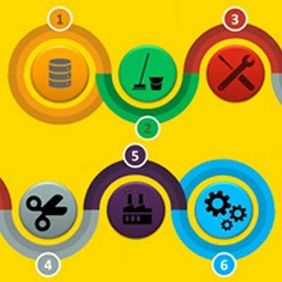It is well known in chemistry and medicine, that the structure of a molecule is closely related to its function. For example, proteins can only be effective if they are appropriately folded. Theoretical chemists make use of this principle: The structure of a molecule can be used to draw conclusions about its activity, for example in Quantitative Structure-Activity Relationship (QSAR) studies.
Such QSAR approaches rely on different mathematical models to establish a relation between molecular structure and biological activities. In this way, properties such as the toxicity, efficacy of substances or kinetic rates for protein-ligand binding can be predicted using QSAR models instead of lengthy and/or expensive laboratory experiments.
In the last several decades, QSAR became an integral tool in the drug discovery pipeline of major pharmaceutical and start-up companies. And the progress of machine learning opened up new possibilities: The fusion of QSAR and machine learning methods shifted the concept of drug discovery from rule-based to data-driven, advancing the discovery of new compounds but also unveiling new challenges for the industry.
A recently published virtual issue in the Journal of Chemical Information and Modeling deals with „The re-evolution of QSAR propelled by the surge of machine learning“. The editorial of this issue consisting of a collection of 13 selected papers has been co-written by UniSysCat researcher Ariane Nunes Alves. The editorial gives an overview of the QSAR approach boosted by machine learning methods and algorithms.
Since July 2021, Dr. Ariane Nunes Alves has been leading a junior research group at the Technische Universität Berlin. Ariane has a strong background in computational biochemistry and biophysics. Her research interests cover structure-based drug design, the kinetics and thermodynamics of ligand-protein binding and the molecular modeling and simulation of ligand-protein interactions. Within UniSysCat, she is working on the development and application of computational methods to study ligand binding kinetics and how kinetic rates can be used for optimizing enzyme catalysis and for tunnel engineering.
The editorial „The (Re)-Evolution of Quantitative Structure–Activity Relationship (QSAR) Studies Propelled by the Surge of Machine Learning Methods“ by Thereza A. Soares, Ariane Nunes-Alves, Angelica Mazzolari, Fiorella Ruggiu, Guo-Wei Wei, and Kenneth Merz has been published in J. Chem. Inf. Model. 2022, 62, 22, 5317–5320. https://doi.org/10.1021/acs.jcim.2c01422



